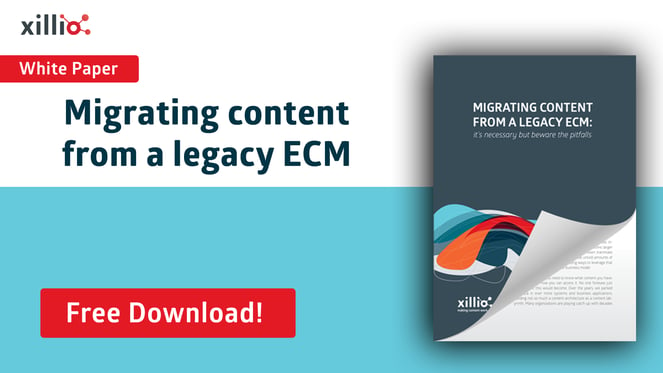The smart way to migrate: Exploring the intricacies of content migrations and the strategies to perfect them
by Sjoerd Alkema, on Sep 12, 2023 10:32:39 AM
This is part 3 of a series of blogs discussing the intricacies of content migrations and the strategies to perfect them.
In the last blog "The smart way to migrate: Integration and Redirection", I discussed the challenges and the importance of keeping track of content during migration. If you want to know more about integration and redirection during a migration, check out our previous post!
Migrating to a new system is always about more than just the data. While the mechanics of the move are important, the dependencies of the target system play a crucial role in ensuring a smooth migration process. Over the years, we've realized that understanding these dependencies can make or break the success of your migration journey.
Why Target System Dependencies Matter
Before diving deep into the intricacies of migration, let's acknowledge the elephant in the room - the target system dependencies. These are the constraints, features, and requirements of the system you are moving to. Ignoring these can lead to multiple issues:
- Mismatched System Requirements: The target system might have prerequisites that your content doesn’t match.
- Feature Overlook: Skipping out on understanding the new system's features could mean missing out on functionalities that can be beneficial for your content or users.
- Operational Disruptions: Not knowing how your content will behave in the new environment can lead to operational inefficiencies, or worse, business disruptions.
Steps to Tackle Target System Dependencies
- Detailed System Analysis: Begin with a thorough analysis of your target system. Understand its storage limitations, metadata requirements, and content structures. For instance, if your target system supports advanced tagging, it would be wise to adapt your content for this feature.
- Engage with System Experts: If your migration is to a popular platform, chances are experts and consultants specialize in it. Engage them to understand the nuances and best practices specific to the target system.
- Content Adaptation: Based on the insights from your system analysis and expert consultations, prepare your content. This could mean re-structuring it, updating metadata, or even archiving redundant content.
- Pilot Testing: Before the full-scale migration, perform a pilot migration. This will help you see how your content fits and behaves in the new system and iron out any glitches arising from overlooked system dependencies.
- Feedback Loop: After the pilot, gather feedback, especially from end users. This will help you understand any hiccups they are facing due to system dependencies. Use this feedback to refine your migration strategy.

Recognizing the challenges and nuances of migration and its associated target system dependencies, we're proud to introduce our specialized feasibility study. Our goal? To ensure your migration doesn't just succeed but excels.
Why is this Feasibility Study Essential?
- Tailored Analysis: Every organization's content management requirements are unique. Our study dives deep into understanding these unique nuances, ensuring the target system is an optimal fit.
- Mapping Mastery: With the insights from the study, we can draw a comprehensive map outlining how your current content management practices will align with, and benefit from, the capabilities of the target system.
- Risk Minimization: By analyzing potential pitfalls, constraints, and system requirements beforehand, our feasibility study acts as a preventive measure, eliminating any unexpected hiccups during the migration process.
- Stakeholder Alignment: Our feasibility study is not just a technical document. It’s a communication tool, ensuring all stakeholders – from tech teams to end-users – understand and are aligned with, the migration vision and objectives.
Let's Future-Proof Your Migration With a process as complex as migration, why leave anything to chance? Our feasibility study offers a structured, insightful, and strategic approach to ensure your content doesn't just move, but advances. As you contemplate the next steps in your digital transformation journey, consider leveraging our expertise to make the transition as seamless and strategic as possible.
While migration is a challenging endeavor, understanding target system dependencies can streamline the process and ensure you maximize the benefits of your new system. Remember, it's not just about moving your content; it's about ensuring it thrives in its new home.
Want to learn more about the integration and redirection of your content during your migration journey? Read part 2 of this blog series: "The smart way to migrate: integration and redirection"
Migrating content from a legacy ECM
Is your legacy archive killing your business? How to migrate your content to accelerate growth, increase customer satisfaction and improve the digital experience
This white paper explores the challenges holding back your initiatives to consolidate content from one or more stale and outdated legacy content repositories as you drive your business along the road of digital transformation. It provides insights and experiences that have triggered our clients to reach out to us for guidance and heavy-duty work to overcome those challenges.





%20(300%20x%2060%20px)%20(3).png?width=635&height=127&name=ISO%20email%20signature%20(390%20x%2060%20px)%20(300%20x%2060%20px)%20(3).png)